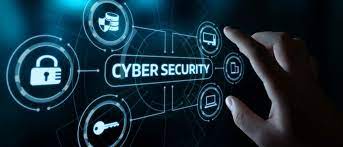Emerging Cyber Security Approaches
Introduction
People have become more dependent on information systems over the past few years. Even as societies are increasingly embracing open networks, the demand for new cyber security measures grows each day. Emerging trends such as internet of things (Iota) have further prompted governments, businesses and institutions to seek advanced ways of tackling cyber threats.
One of the reasons that make it difficult to handle these threats is the occurrence of global laws that require investigation of facts across international borders. This has increased the complexity of networking infrastructure resulting to demand of new approaches to address cyber threats. There several existing cyber security strategies being used by organizations, and while their monitoring system can help secure information, they are hardly enough to challenge today’s external and persistent problems efficiently.
Current methods include facial recognition and finger biometrics that have seen a wide range of applications and usage. However, these approaches need to be updated and highly sophisticated to address emerging threats and issues. However, there are new approaches being researched and tested to address cyber security issues such as the use of random numbers, remote agent technologies, real-time forensic analysis, and smart card technologies.
Although these technologies have not been widely accepted and have received insufficient pragmatically application, they can offer strategic solutions to the issue of cyber security when well researched.
Use of random numbers
Scientists at the University of Texas at Austin have come up with a masterpiece project on cryptography where new methods for producing random numbers could be used to encrypt data (Bowie, 2016). At the core of the random number technology is David Zuckerman, UT scientist and Eshan Chattopadhyay, a computer science graduate. The two scientists developed a theorem that lays the foundation for new methods of producing random numbers that require little computer efforts (Ransom, 2016).
The idea behind the technology is to create a random application that creates sequences which do not obey a particular pattern and thus cannot be predicted. Scientists use randomness to create algorithms and model complexities. Some of the most general uses of randomness are measuring demographic changes in the economy and electoral polling.
In their draft -paper titled Explicit Two-Source Extractors and Resilient Functions, the scientists state that their efforts are “motivated by the ubiquitous use of randomness in various branches of computer science like algorithms, cryptography, and more”(Zuckerman & Chattopadhyay 2016, pg. 2).
According to Ransom (2016), extractors are functions that output and distribute random numbers randomly that vary from the input source. Most applications require truly random, uncorrelated bits, but most easily obtainable sources of randomness do not satisfy these conditions. The study of randomness extraction pays attention to nearly uniform numbers from sources that are only weakly random.
Government Role
The federal government faces a lot of cyber security threat that has the potential of jeopardizing infrastructure, economy, and freedom of citizens. The failure to actively seek new and sophisticated actions against cyber threats can have multidimensional effects. Furthermore, nations and states such as Russia, China, and Iran have expressed willingness to grab US digital data for their gains.
For these reasons, the federal government is at the forefront of supporting emergent cyber security technologies such as the Explicit Two-Source Extractors and Resilient Functions based on random numbers. The government has supported these researchers indirectly through federal aid, provision of sufficient resources and infrastructure and provision of a free atmosphere to carry our scientific experiments freely.
Additionally, the government has the developed of viable cyber security liability and insurance system, coupled with the advocacy for more private sector efforts to enhance general awareness and ratings.
Real examples
According to Zuckerman (2016), high-quality randomness can help keep online channels more secure. People need randomness when making online transactions to protect information from hackers. For example, buying something from online sites like Amazon will require randomness functionality. While there are current randomness technologies in play, use of the emergent Explicit Two-Source Extractors and Resilient Functions can offer more secure and unpredictable random patterns.
The masterpiece cryptography can be used to encrypt data, make electronic payments more secret while providing more accurate statistically significant polls. The emerging technology creates truly random numbers with minimal computations than existing methods. This will go a long way in facilitating high levels of security for consumer credit cards and military communication…
References
Tarala, J. (2011, Feb). A real-time approach to continuous monitoring. Retrieved from http://www.sans.org/reading-room/analysts-program/netwitness-splunk-monitoring
Tarala, James. (2011). A Real-Time Approach to Continuous Monitoring. SANS White Paper.
Tiwari, V., Shailendra, G., Tiwari, R., & K, M. (2010). Computational analysis of .net remoting and mobile agent in distributed environment. JOURNAL OF COMPUTING, 2(6), 34-39. Retrieved from http://arxiv.org/ftp/arxiv/papers/1006/1006.4538.pdf
Want help to write your Essay or Assignments? Click here


